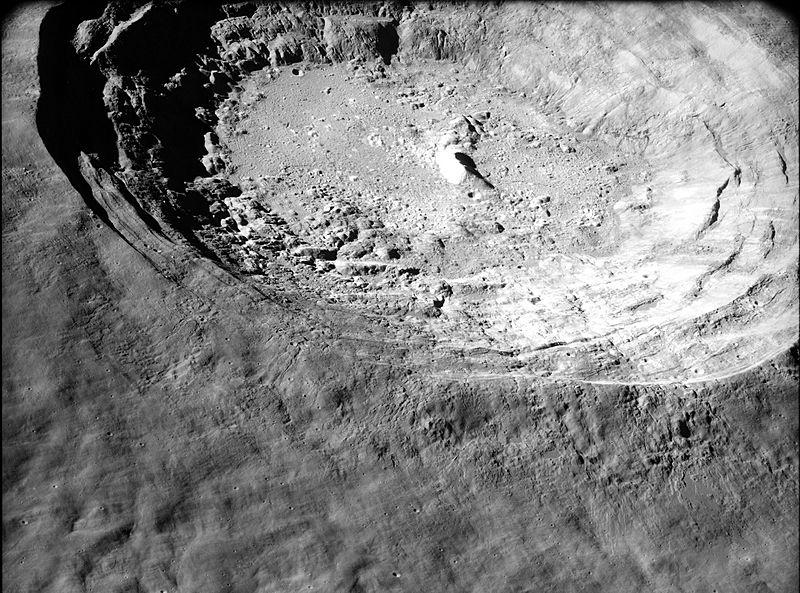Archivo: Aristarchus crater hrp162

Description: Oblique view of part of part of Aristarchus (crater), on the moon. This is Figure 165 of Apollo Over the Moon (NASA SP-362, 1978), which has the following caption: Aristarchus is a large crater on the edge of a plateau within northern Oceanus Procellarum. In this scene the crater is viewed obliquely from the north. One of the brightest and youngest craters of its size on the near side of the Moon, Aristarchus is believed to be younger even than Copernicus. The general appearance of Aristarchus and of parts of the plateau around it led Alfred Worden, the Apollo 15 CMP, to describe this part of the Moon as "... probably the most volcanic area that I've seen anywhere on the surface." For many years before the Apollo missions, Earth-based viewers had reported telescopic sightings of transient events centered on Aristarchus. These brief, subtle changes in color or in sharpness of appearance have been suggested as evidence for volcanic activity or the venting of gases from the lunar interior. The sightings are controversial, but Aristarchus remains a center of interest. -M.C.M.
Title: Aristarchus crater hrp162
Credit: Apollo 15 Panoramic camera image AS15-P-0326, cropped to show Aristarchus crater. Immediate source: NASA History Program Office, Apollo Over the Moon, A view from orbit (NASA SP-362, 1978) Figure 146 hrp162
Author: NASA
Usage Terms: Public domain
License: Public domain
Attribution Required?: No
Usos del archivo
La siguiente página enlaza a este archivo:

